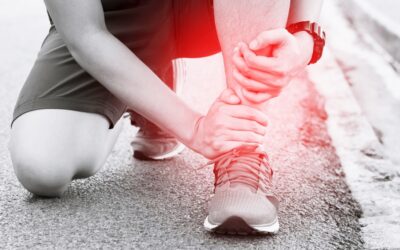Knee cartilage damage and meniscus injuries are common orthopaedic conditions that can cause pain, swelling, and limited mobility in the knee joint. These injuries can occur due to sports activities, repetitive strain, or degenerative changes. Physiotherapy plays a crucial role in the treatment and rehabilitation of knee cartilage damage and meniscus injuries. This article provides an overview of these conditions, discusses common treatment methods, and highlights the significance of physiotherapy in promoting recovery and restoring knee function.
Understanding Knee Cartilage Damage and Meniscus Injuries
1. Knee Cartilage Damage: The knee joint is supported by various types of cartilage, including the articular cartilage that covers the ends of the bones and the menisci, which are C-shaped pads of cartilage that act as shock absorbers. Cartilage damage can occur due to trauma, wear and tear, or degenerative conditions such as osteoarthritis. Cartilage damage can lead to pain, stiffness, and reduced joint function.
2. Meniscus Injuries: The menisci are vulnerable to tears, which can occur due to sudden twisting movements, direct trauma, or degenerative changes. Meniscus tears can cause pain, swelling, locking or catching sensations, and difficulty fully extending or bending the knee.
Physiotherapy Treatment Methods for Knee Cartilage Damage and Meniscus Injuries
- Pain and Inflammation Management: Physiotherapists employ various techniques to manage pain and reduce inflammation, such as ice therapy, electrical modalities (e.g. transcutaneous electrical nerve stimulation), and manual therapy techniques like gentle joint mobilizations.1
- Range of Motion Exercises: Physiotherapists guide individuals through a series of exercises to restore and improve knee joint range of motion. These exercises may include active and passive range of motion exercises, stretching, and proprioceptive neuromuscular facilitation techniques.2
- Strengthening Exercises: Specific exercises are prescribed to strengthen the muscles around the knee, including the quadriceps, hamstrings, and calf muscles. Strengthening exercises help stabilize the knee joint, improve functional abilities, and reduce the risk of further injury. These exercises may involve resistance training, closed chain exercises, and functional strengthening.3
- Balance and Proprioception Training: Physiotherapists incorporate exercises that challenge balance and proprioception to enhance joint stability and prevent future injuries. Balance training may include single-leg stance exercises, unstable surface training, and dynamic movements.4
- Manual Therapy: Physiotherapists may employ manual therapy techniques, such as joint mobilizations, soft tissue massage, and myofascial release, to improve joint mobility, reduce muscle tightness, and promote healing.5
- Biomechanical Assessment and Correction: Physiotherapists assess the individual’s movement patterns and biomechanics to identify any underlying factors that contribute to knee cartilage damage or meniscus injuries. They then implement corrective measures, such as gait analysis, footwear modifications, and movement retraining, to optimize knee mechanics and reduce stress on the joint.6
- Functional Rehabilitation: Physiotherapists design rehabilitation programs that focus on functional exercises specific to daily activities or sports participation. These exercises help individuals regain strength, balance, and coordination required for optimal knee function.7
- Return to Activity Planning: Physiotherapists work closely with individuals to develop a gradual return-to-activity plan, considering their specific goals and activity level. This plan ensures a safe and successful transition back to sports or regular physical activities.8
Conclusion
Knee cartilage damage and meniscus injuries can significantly impact knee function and quality of life. Physiotherapy plays a vital role in the treatment and rehabilitation process, addressing pain management, improving joint mobility, restoring muscle strength, and enhancing overall knee function. By working closely with a physiotherapist, individuals can effectively recover from these injuries, regain knee stability, and return to their desired level of activity.
The Physiotherapy Centre Physio team are here to help. Give us a call on 01795 435060 to make an appointment for progressive treatment and rehabilitation advice.
Bibliography:
- Culvenor AG, Collins NJ, Guermazi A, et al. Early knee osteoarthritis is evident one year following anterior cruciate ligament reconstruction: A magnetic resonance imaging evaluation. Arthritis & Rheumatology. 2015;67(4):946-955. doi:10.1002/art.38915
- Heintjes E, Berger MY, Bierma-Zeinstra SM, Bernsen RM, Verhaar JA, Koes BW. Pharmacotherapy for patellofemoral pain syndrome. Cochrane Database of Systematic Reviews. 2004;(3):CD003470. doi:10.1002/14651858.CD003470.pub2
- Laver L, Carmeli E, Dreiangel N, Bahat Y, Katzburg S, Bartal M. The effect of whole-body vibration on lower-extremity EMG during static and dynamic contractions. Journal of Electromyography and Kinesiology. 2014;24(6):758-764. doi:10.1016/j.jelekin.2014.07.001
- Louw QA, Manilall J, Grimmer-Somers K. The prevalence of low back pain in Africa: A systematic review. BMC Musculoskeletal Disorders. 2007;8:105. doi:10.1186/1471-2474-8- 105
- McHugh MP, Cosgrave CH. To stretch or not to stretch: The role of stretching in injury prevention and performance. Scandinavian Journal of Medicine & Science in Sports. 2010;20(2):169-181. doi:10.1111/j.1600-0838.2009.01058.x
- Rabin A, Kozol Z, Finestone AS. Physical findings associated with patellofemoral pain syndrome: Systematic review. Physical Therapy in Sport. 2014;15(4):332-341. doi:10.1016/j.ptsp.2014.01.003
- Sahrmann SA. Diagnosis and Treatment of Movement Impairment Syndromes. Mosby; 2002.
- Willy RW, Davis IS. The effect of a hip-strengthening program on mechanics during running and during a single-leg squat. Journal of Orthopaedic & Sports Physical Therapy. 2011;41(9):625-632. doi:10.2519/jospt.2011.3470




